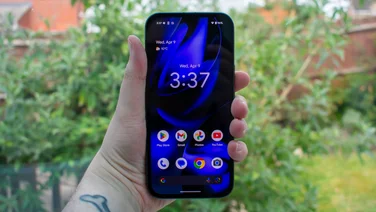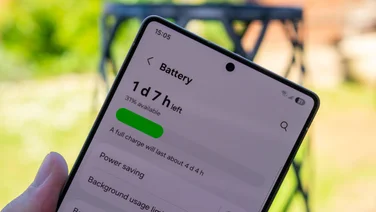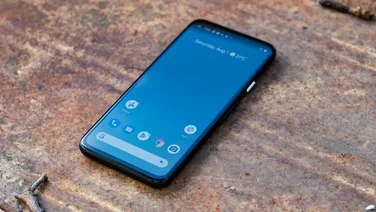To help us provide you with free impartial advice, we may earn a commission if you buy through links on our site. Learn more


















- Colour accurate 90Hz screen
- Second-best battery life we’ve tested
- 5G for less
- Lacks new standout features
- No IP68 rating
If theres one thing you can say with absolute certainty about OnePlus, its that it has made reviewing phones rather banal. Its all for the benefit of the consumer, of course: the Taiwanese company rarely fails to deliver sleek, powerful handsets that equal or in some cases outperform their high-priced counterparts. Most reviews of rival phones tend to reach the same conclusion: save some cash and buy a OnePlus instead.
READ NEXT: Best mid-range smartphones
But with prices steadily rising in recent years, OnePlus continues to drift away from its flagship-killing roots. The crowded mid-range territory is also becoming increasingly difficult to conquer, with rivals like Xiaomi, Realme and Oppo throwing their hats into the ring.
An arguably low-key update, the recently-unveiled OnePlus 8 hopes to deliver the same cutthroat value proposition of past handsets, but with a jump in price and more of a focus on the Pro variant this year, is the regular OnePlus variant beginning to lose its touch?
OnePlus 8 review: What you need to know
First, lets address the fact that the OnePlus 8 isnt exactly in the same league as its Pro-branded stablemate. It costs £200 less than its flashier sibling, but lacks the buttery-smooth 120Hz screen (the OnePlus 8 is only 90Hz), wireless charging, IP68-rated protection and a quad-camera setup with intriguing colour filter camera.


















What it does provide, however, is the same internal hardware and design. These are the first OnePlus phones to be powered by Qualcomms most up-to-date silicon, the Snapdragon 865, and they both come with a combination of 8GB or 12GB of LPDDR5 RAM. This is also the first time that both OnePlus phones come with 5G support as standard.
OnePlus 8 review: Price and competition
Both phones have seen a price increase this year, but they remain miraculously affordable. Launching in the UK for £599, the OnePlus 8 costs £50 more than its predecessor, which launched six months ago. When you consider the top-end hardware, thats still astonishing value for money.
Theres also the option to pay an extra £100 for a OnePlus 8 with 12GB of RAM and double the internal storage, which is the model I was sent to review. The OnePlus 8 Pro with all the extra bells and whistles costs £799 or £899.


















This puts the OnePlus 8 in the same ballpark as the iPhone 11. However, Apples flagship is smaller, doesnt have an OLED screen, only has 64GB of non-expandable storage and lacks the third macro camera of the OnePlus 8. I know which phone Id rather get for my money.
OnePlus 8 review: Design and key features
The most crucial difference between the OnePlus 8 and last years OnePlus 7T is that the rear of the handset no longer has the large circular camera bump. Once a point of contention, the OnePlus 8s triple-camera array is instead placed neatly in a vertical traffic light formation in the centre. The symmetrical lines are more elegant looking to my eyes, and the cameras dont protrude as far, either.
The matte glass finish on the rear and long, subtly curved edges feel great to touch, and the new colour options look stunning. I was given the Glacial Green colour for review, and its mint-like finish is really eye-catching. Im yet to see the Onyx Black model in person, but the polished finish is likely to pick up more fingerprints, and I also think it looks rather drab in comparison.
The small 16MP selfie camera is less than 4mm in diameter 3.84mm to be exact sits neatly in the top-left corner of the display and the circumference is illuminated whenever you successfully unlock the phone with your face, which is a nice touch.


















The usual array of physical features make a return, including the three-position do not disturb switch and oblong power button on the right edge. Frustratingly, OnePlus has adopted an annoying iPhone-like quirk this year: in order to turn the phone off, you have to hold down the power button in conjunction with the left-mounted volume rocker. Grr.
The phones USB-C charging port, Dolby Atmos-certified speaker and dual-SIM tray can be found on the bottom of the handset, and a fingerprint reader is sensibly placed under the bottom portion of the Gorilla Glass-protected screen for secure unlocking and mobile payments. Despite the OnePlus 8 Pro finally receiving proper IP68-rated protection, the company says the regular OnePlus 8 is still only water-resistant for everyday use. How disappointing.
OnePlus 8 review: Display
OnePlus is harking about the many merits of its display this year. The OnePlus 8s screen was awarded a practically perfect A+ rating by the folks at DisplayMate a first for a smartphone screen with an impressive just noticeable colour difference (JCND) of 0.4. Based on our own in-house testing, Im inclined to agree with DisplayMates results.


















As for the technical gubbins, the OnePlus 8 uses an HDR10+ certified AMOLED panel, with a resolution of 2,400 x 1,080. The screen measures 6.55in across the diagonal, supports 10-bit colours and benefits from a buttery smooth refresh rate of 90Hz rather than the standard 60Hz.
There are a total of five display modes to choose from, although I found the phones sRGB setting located in the advanced section of the screen calibration settings to be the most colour accurate. This mode delivers 93.4% of the sRGB gamut, with a total volume of 94.1% and a colour accuracy thats frankly unheard of for a phone at this price. An average Delta E of 0.9 is absolutely exceptional and is a score usually reserved for high-priced monitors and the like.
As for brightness, the OnePlus 8 also does a good job in that regard, with a recorded peak luminance of 775cd/m² with the auto-brightness setting engaged. In short, its a worthy display more so than most and the fluid 90Hz refresh rate is simply an added bonus.
OnePlus 8 review: Performance and battery life
Secretly, anyone who decides to stick with the OnePlus 8 will also be feeling smug that theyve potentially scored the better bargain of the two phones. Thats mainly because its a lot cheaper but also because, inside, the 8 employs exactly the same core hardware as the OnePlus 8 Pro.


















For the technically-inclined, thats an octa-core, 5G-enabled, Qualcomm Snapdragon 865 with a maximum clock speed of 2.84GHz and Adreno 650 for graphics processing. Depending on your budget, theres a choice of 8GB or 12GB of LPDDR5 RAM and 128GB or 256GB of UFS storage. Whichever model you choose, theres a 4,300mAh battery keeping things ticking along, although this cant be charged wirelessly like the OnePlus 8 Pro.
Thats a heck of a lot of numbers, so I cant blame you if you would rather have the abridged version. Simply speaking, this is basically the very pinnacle of mobile hardware at the time of writing at a fraction of the price of the latest flagships, you cant really do wrong.
The Geekbench benchmark results speak for themselves, with the Snapdragon 865 providing a 20% performance boost over the older Snapdragon 855 Plus of the last generation. The same test failed to run on the iPhone 11, but rest assured that the OnePlus 8 performs just as well as every other current-gen flagship.

Unfortunately, the on-screen GFXBench test failed to recognise the phones high-refresh screen, instead maxing out at 60fps. The off-screen test paints a more reliable picture of gaming performance, however. You should be able to get up to 90fps on most titles, provided they support higher frame rates.

Battery life is the real reason youre going to want to pick up the OnePlus 8. Playing a looped video with data connections switched off, display brightness set to 170cd/m² at 90Hz, the OnePlus 8 managed to last a staggering 26hrs 47mins before needing to recharge. Thats well over an entire days worth of constant use on just a single charge charging from zero to full in around an hour and its also the second-best battery life weve ever tested.

OnePlus 8 review: Cameras
Where the OnePlus 8 doesnt quite grab headlines is in its camera array. To be clear, the camera hardware on offer is rather good for the price, but what we do have isnt quite as feature-rich as the OnePlus 8 Pro, and it remains largely unchanged from last years model.
There are a total of three cameras on the rear of the phone. The main camera a Sony IMX586 module captures 48-megapixel images with an aperture of f/1.75. The 16-megapixel ultra-wide module has a 116-degree field of view, and like last year theres also a 2-megapixel macro camera to play with.
The regular OnePlus 8 lacks the telephoto camera on the Pro model, and it also doesnt have the fancy new colour filter camera either. This shoots 5-megapixel infrared images you can see the image samples in Jons review here but this is little more than a gimmick if you ask me, so no harm lost.
Though the primary camera can technically capture 48-megapixel images, it produces 12-megapixel pictures by default, but you can switch between the two with a simple press of a button at the top of the screen. And you might want to do that, too, since the 48-megapixel images are filled to the brim with finer details.
Whichever shooting mode you choose, the results are really rather good for the price. The iPhone 11s images look a tad more naturalistic, but generally speaking the OnePlus 8 is sharper and has better contrast. I much preferred the portrait pictures taken on the OnePlus 8, as the exposure levels were more accurately judged.

The OnePlus 8s wide-angle camera no longer suffers from the distorted-looking images that plagued the OnePlus 7Ts setup. Straight lines are actually straight this year, and wide-angle video is finally watchable. The macro camera is much the same, though: its a slight gimmick, but the zoomed-in pictures look quite good, so long as you have plenty of light and youre at least 2.5cm away from the object.

As for video capabilities, you can shoot at up to 4K resolution at 60fps, although you have to dial the setting down to 30fps if you want stabilised footage or HDR capture. The footage is both detail-packed and very stable, even without the Super Stable mode switched on.
OnePlus 8 review: Verdict
Ill be the first to admit that I prematurely dismissed the OnePlus 8 in my briefing call. Rather than adding new features, OnePlus would alternately increase the cost by £50 and launch a near-carbon copy of last years model. Alarm bells immediately went off.
Fixing the problems of last years phone, while simultaneously improving almost every aspect, the OnePlus 8 instead demonstrates that a twice-yearly phone launch doesnt need to add new features to be worthy of admiration. Excelling in all areas, a simple case of refinement is perhaps the best strategy of all.
| OnePlus 8 specifications | |
|---|---|
| Processor | Octa-core Qualcomm Snapdragon 865 (1×2.84GHz. 3×2.42GHz, 4×1.8GHz) |
| RAM | 8GB or 12GB |
| Screen size | 6.55in |
| Screen resolution | 2,400 x 1,080 |
| Pixel density | 402ppi |
| Screen type | AMOLED |
| Front camera | 16MP |
| Rear camera | 48MP, 26MP (wide), 2MP (macro) |
| Flash | Dual-LED |
| Dust and water resistance | No |
| 3.5mm headphone jack | No |
| Wireless charging | No |
| USB connection type | USB-C |
| Storage options | 128GB or 256GB |
| Memory card slot (supplied) | No |
| Wi-Fi | 802.11ax |
| Bluetooth | 5.1 |
| NFC | Yes |
| Cellular data | 5G |
| Dual SIM | Yes |
| Dimensions (WDH) | 160 x 73 x 8mm |
| Weight | 180g |
| Operating system | Android 10 (Oxygen OS 10.5) |
| Battery size | 4,300mAh |






